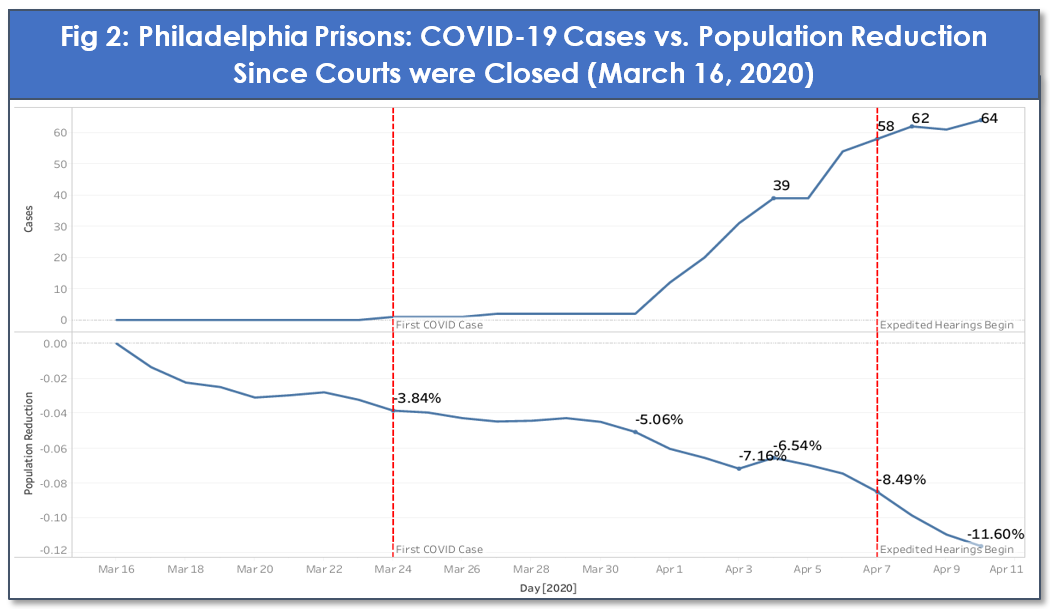FOR IMMEDIATE RELEASE
DEFENDER ASSOCIATION OF PHILADELPHIA’S SUMMARY OF EXPEDITED COURT HEARINGS
Three days of expedited hearings resulted in the release of 235 people from Philly’s jails.
The Defender will release weekly data summaries of court hearings during the COVID-19 emergency.
PHILADELPHIA– The Defender Association of Philadelphia today publicized its first data summary documenting how many people have been released from Philly’s jails since expedited hearings began on April 7.
The Defender’s data shows that the first three days of hearings resulted in 235 releases from Philly’s prisons, or a three percent decrease in the prison population (when factoring in new admissions). This is the sharpest decrease in jail population since the courts were closed on March 16 due to the coronavirus epidemic.
“We’re starting to see some very positive movement toward safely reducing the number of people in our jails, but we still have a lot of work to do,” said Chief Defender Keir Bradford-Grey, “We’re hopeful this trend can continue–we would like to see a lot more people released to make our prisons safer for the people who are incarcerated and those who work in our prison system.”

During the emergency shutdown, the Defender has not only represented its own clients but every person who is incarcerated or targeted by the city for quarantine. Between April 7 – 9, the Defender presented 755 motions on behalf of 410 people who can be released from jail without risking public safety. Of these, 434 (57.48%) were granted, impacting 241 people.
The Defender has also submitted 650 written petitions for bail reductions, probation detainer lifts, and early parole to the First Judicial District since March 20. By April 10, the courts ruled on 560 of these petitions, granting 473 (84%).
The Defender will be putting out updated data summaries on a weekly basis. Bradford-Grey says this information is not just useful but critical to stopping the spread of COVID-19.
“We all benefit from having this data,” Bradford-Grey said, “Justice system stakeholders can use it to see how we’re all performing, and where there are opportunities to innovate or improve the process. It will also inform the loved ones of the incarcerated and their communities about our progress toward safely releasing as many people as possible.”
# # #










